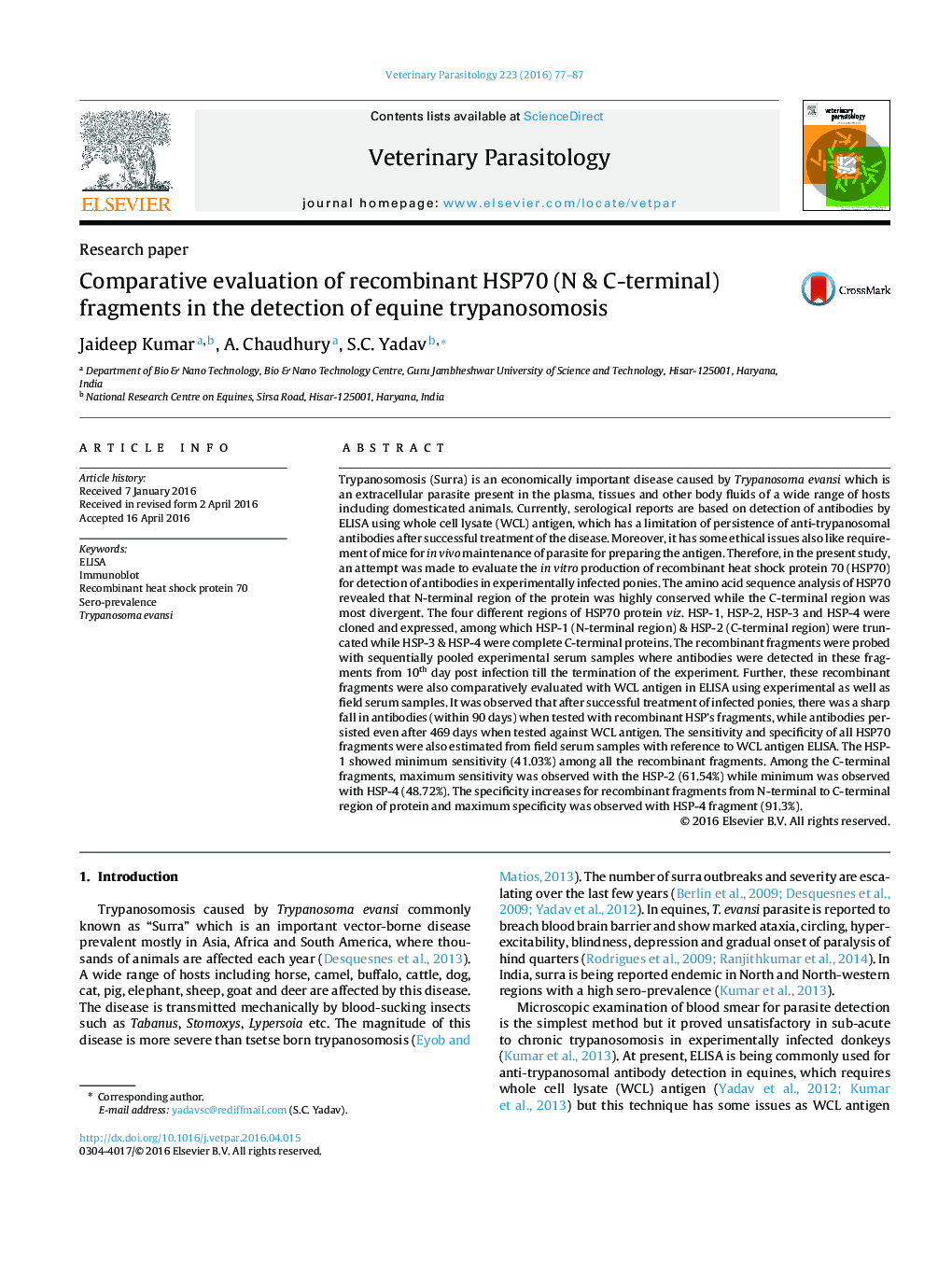| کد مقاله | کد نشریه | سال انتشار | مقاله انگلیسی | نسخه تمام متن |
|---|---|---|---|---|
| 2469786 | 1555653 | 2016 | 11 صفحه PDF | دانلود رایگان |

• The recombinant Heat Shock Protein 70 (HSP70) used in detection of equine trypanosomosis.
• The recombinant HSP70’s fragments detected anti- T.evansi antibodies in experimental serum samples.
• All recombinant fragments detected anti-T.evansi antibodies in experimentally infected ponies on 10th days post infection.
• The recombinant HSP’s fragments were evaluated using field serum samples.
• The specificity increases for recombinant HSP70 fragments from N-terminal to C-terminal region of protein.
Trypanosomosis (Surra) is an economically important disease caused by Trypanosoma evansi which is an extracellular parasite present in the plasma, tissues and other body fluids of a wide range of hosts including domesticated animals. Currently, serological reports are based on detection of antibodies by ELISA using whole cell lysate (WCL) antigen, which has a limitation of persistence of anti-trypanosomal antibodies after successful treatment of the disease. Moreover, it has some ethical issues also like requirement of mice for in vivo maintenance of parasite for preparing the antigen. Therefore, in the present study, an attempt was made to evaluate the in vitro production of recombinant heat shock protein 70 (HSP70) for detection of antibodies in experimentally infected ponies. The amino acid sequence analysis of HSP70 revealed that N-terminal region of the protein was highly conserved while the C-terminal region was most divergent. The four different regions of HSP70 protein viz. HSP-1, HSP-2, HSP-3 and HSP-4 were cloned and expressed, among which HSP-1 (N-terminal region) & HSP-2 (C-terminal region) were truncated while HSP-3 & HSP-4 were complete C-terminal proteins. The recombinant fragments were probed with sequentially pooled experimental serum samples where antibodies were detected in these fragments from 10th day post infection till the termination of the experiment. Further, these recombinant fragments were also comparatively evaluated with WCL antigen in ELISA using experimental as well as field serum samples. It was observed that after successful treatment of infected ponies, there was a sharp fall in antibodies (within 90 days) when tested with recombinant HSP’s fragments, while antibodies persisted even after 469 days when tested against WCL antigen. The sensitivity and specificity of all HSP70 fragments were also estimated from field serum samples with reference to WCL antigen ELISA. The HSP-1 showed minimum sensitivity (41.03%) among all the recombinant fragments. Among the C-terminal fragments, maximum sensitivity was observed with the HSP-2 (61.54%) while minimum was observed with HSP-4 (48.72%). The specificity increases for recombinant fragments from N-terminal to C-terminal region of protein and maximum specificity was observed with HSP-4 fragment (91.3%).
Journal: Veterinary Parasitology - Volume 223, 15 June 2016, Pages 77–87